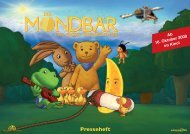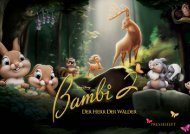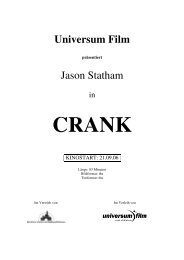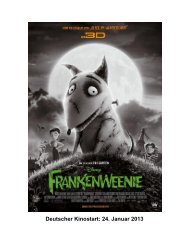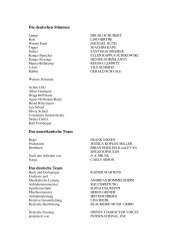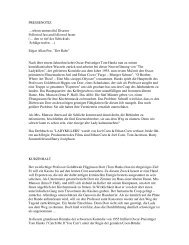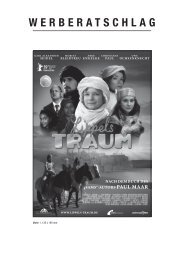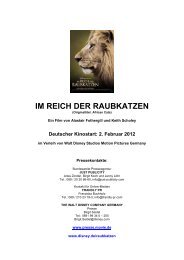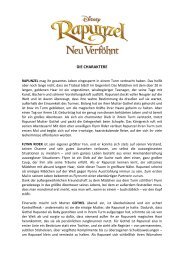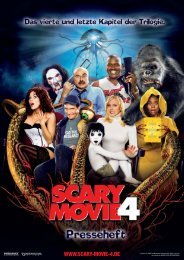The Greatest Game Ever Played - Walt Disney Studios Motion ...
The Greatest Game Ever Played - Walt Disney Studios Motion ...
The Greatest Game Ever Played - Walt Disney Studios Motion ...
You also want an ePaper? Increase the reach of your titles
YUMPU automatically turns print PDFs into web optimized ePapers that Google loves.
een caught up in the pastoral nature of the sport, but one of the things I was interested in is<br />
that it’s such a wild mind game. To me, it’s about one-upsmanship and psyching people out<br />
and just this incredible intensity. It’s<br />
made for cinema in that sense and<br />
that’s what we wanted to capture.”<br />
Adds Frost: “<strong>The</strong> idea was to<br />
really get inside the game—to<br />
visualize it in ways that haven’t been<br />
attempted before.”<br />
To go after the kind of visuals he<br />
had in mind, Paxton collaborated<br />
closely with director of photography<br />
Shane Hurlbut, who previously<br />
brought a creative eye to shooting<br />
surfing in Into the Blue and baseball in the comedy Mr. 3000. In a coincidence that seemed to<br />
verge on fate, Hurlbut, without even having talked to Paxton about the film, brought the same<br />
book of Kodachrome photographs to their first meeting as Paxton had been looking at for<br />
inspiration. Hurlbut was hired on the spot.<br />
In an attempt to capture the same kind of high-contrast resolution they’d admired in the<br />
photographs, Hurlbut chose the oldest film stock he could find to shoot THE GREATEST<br />
GAME EVER PLAYED. “<strong>The</strong> old Kodachrome doesn’t exist anymore,” he explains, “but the<br />
stock we used responds very much like it. It’s very unusual to shoot on stock this old, and I<br />
think that’s one of many things that sets this film apart.”<br />
When it came to shooting the golf<br />
scenes, Hurlbut tried to bring the camera<br />
literally inside the fireworks going off in<br />
the player’s head. “We tried to bring the<br />
cameras inside ‘the zone’—that place every<br />
golfer goes to focus,” he explains. “We<br />
wanted to show that Harry Vardon’s<br />
particular method of playing was to block<br />
out everything around him. People.<br />
Buildings. Trees. <strong>Ever</strong>ything. We used<br />
techniques in post-production to strip away his surroundings. Francis was different. He honed<br />
in on the pin and the hole, tried to pull them in closer to him, so we used zooming techniques<br />
to capture this. And then there was Ted Ray. <strong>The</strong>re was no zone for that guy. He just hit the<br />
hell out of it. For this, we used the camera to ‘fly with the ball,’ to become it. At one point, we<br />
even take the viewer inside the ball, to show all its rubber bands vibrating, stretched to their<br />
absolute max.”<br />
<strong>The</strong> results were exciting to cast and crew. Comments producer Larry Brezner: “You see<br />
angles of golf shots in this movie that you’ve never seen before. You see the ball moving like<br />
you’ve seen a slow-motion bullet move in thrillers. <strong>The</strong>re are very few traditional golf shots<br />
like you see on television with a ball against a blue sky. <strong>Ever</strong>y shot in the film is very different<br />
and entertaining.”<br />
Visual effects supervisor Dennis Berardi worked further with Paxton and Hurlbut to create<br />
19<br />
FORE!



